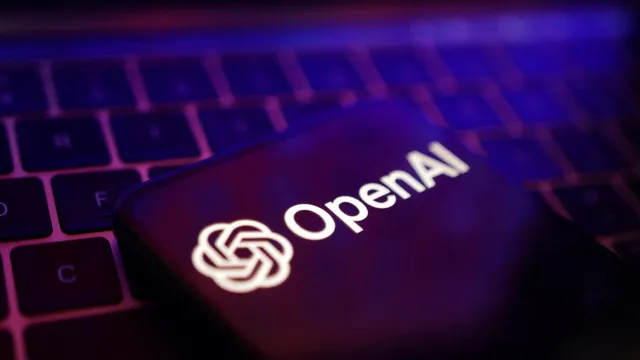- By Alex David
- Sat, 28 Jun 2025 08:59 PM (IST)
- Source:JND
As reported by Reuters, OpenAI has begun renting Google’s custom AI chips to meet its growing computational needs. This is a significant shift for the company that has previously relied on Nvidia GPUs and Microsoft’s Azure infrastructure.
The development signals increasing interest in cost-effective and scalable systems of AI infrastructure, while also adding a new angle to competition among AI chip manufacturers.
OpenAI’s Changing Compute Strategy
OpenAI remains one of the industry’s largest buyers for Nvidia’s GPUs, specifically the H100 and A100 series, which he used for model training along with inference processes These include the sequential steps where a given AI model uses newly available information to generate responses.
ALSO READ: Passport Seva 2.0 Goes Live: Everything To Know About e-Passport Application In India
Currently, Google Cloud is providing OpenAI's access to TPUs as part of their offer to turn some portion of their servers into cloud storage units fed by non-NVIDIA processors.
Why this matters:
TPUs are typically reserved for Google products like Search or Gemini. Rental contracts between clients and companies could 'scale down' basic computing expenses by defaulting on hardware communication with centres lower than average performing process levels. OpenAI's strategic use of TPUs might lessen reliance on certain producers like Nvidia through diversification an attempt to gain competitively favourable terms against Nvidia.
Reasons Behind the Move
Factor | Explanation |
Compute Demand Surge | OpenAI’s user base and AI model complexity require immense computing power. |
Cost Pressure | TPUs offer a potentially cheaper alternative to Nvidia's high-cost GPUs. |
Diversification | Reduces overreliance on Microsoft Azure and Nvidia supply chains. |
Access to Infrastructure | Google Cloud is rapidly opening TPU availability to external partners. |
As reported by The Information, it appears that OpenAI does not have access to some of Google's advanced TPUs, which indicates concerning strategic boundaries within the partnership.
Implications for Microsoft and Nvidia
This suggests that there is a delay in focus on the interplay between OpenAI with Microsoft's exclusive aftermarket primary support. Microsoft being. The main investor and service provider of infrastructural utilities. It appears that OpenAI is still reliant on Azure Servicing for training and deploying workloads but renting google's cloud tpus illustrates an assumingly agnostic direction concerning service placement strategy.
For Nvidia:
Nvidia remains overwhelmingly favoured when it comes to hardware-dominated sectors such as training; however, they might encounter greater competition down the line when it comes to inference, where costs and speeds are greatly prioritised.
For Microsoft:
- This transition hints at renewed focus where service quality metrics alongside operational reliability shift enable openai solutions deployment versatility across several cloud infrastructures available throughout competitive markets lowering provision costs for operating margins.
- At the same time it may motivate Microsoft into quicker expansion cycles related towards advancing their own competitively aimed processors, like their was previously speculated Maia series so stay competitively responsive in this space.
Google’s Gain: Expanding Cloud AI Business
With the engagement of OpenAI, Google brings on board a big name that adds to its widening list of TPU customers, which presently includes:
- Apple
- Anthropic
- Safe Superintelligence (SSI)
This falls under Google's larger initiative to capitalise on their ecosystem of AI hardware, including TPUs, Gemini models and Vertex AI. It shows how Google is unilaterally leveraging innovation for revenue even when they directly compete with OpenAI in generative AI.

